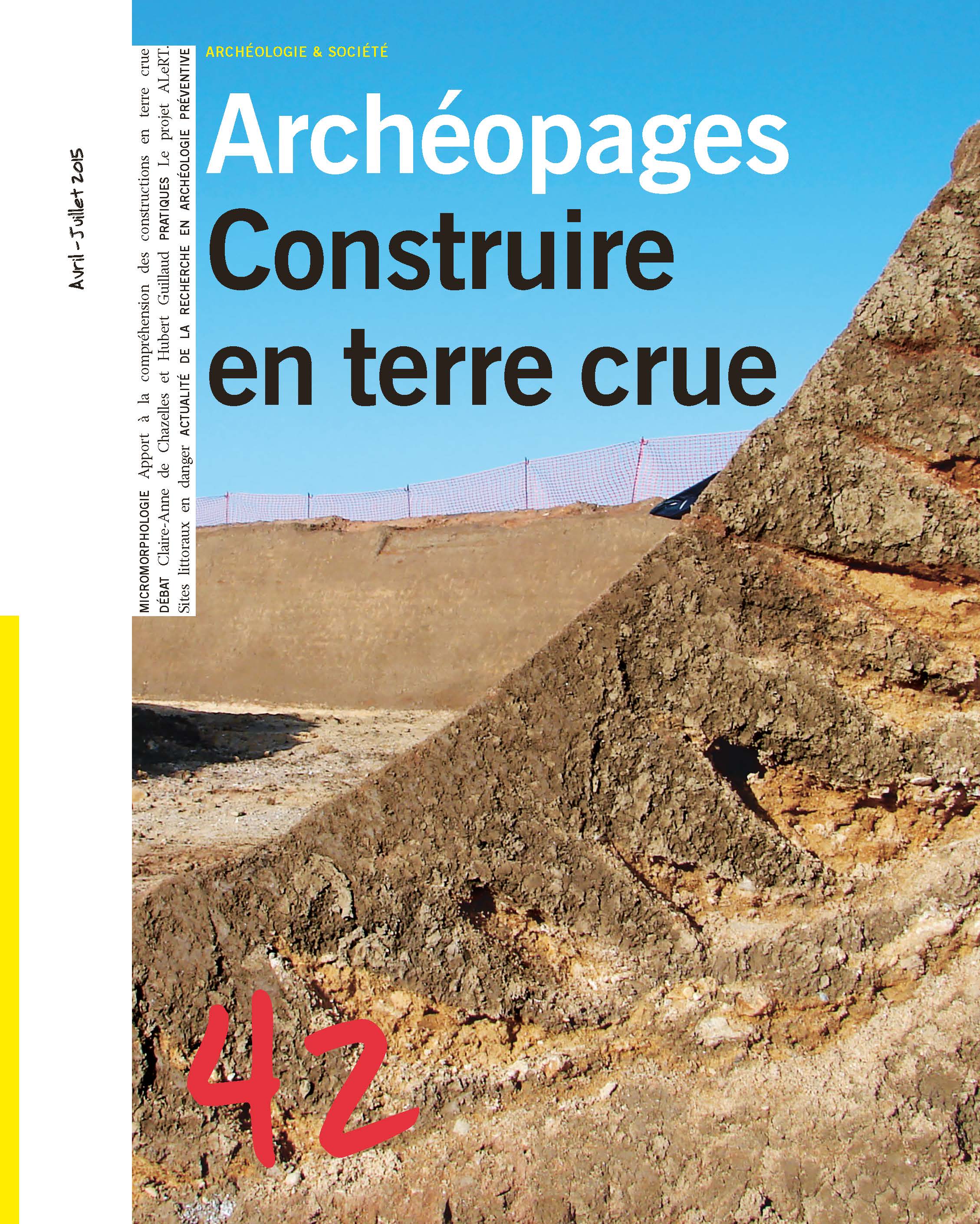You are here
Archéopages 42 - Build in raw clay
To base itself on archaeology in order to rethink our ways of living together in one environment: Such is the editorial line of Archéopages, a scientific journal with a review panel. Each issue develops a specific theme by crossing the points of view of archaeologists of all backgrounds and those of other researchers in human sciences, thus taking stock of the recent contributions of archaeology to the knowledge of societies. A large space is also devoted to modern methods of archaeology. The journal is aimed at researchers, students and enlightened amateurs.
What is the status of this building material compared to others? Is its use linked to specific functions of construction? To the social status of the resident? To economic and political situations? To particular natural environments? To what other materials is it associated to and in which contexts? What developments and technical inventions did it promote?

Editorial
Dominique Garcia
File : Build in raw clay
Building with earth in the Neolithic in France. An overview
Ingrid Sénépart, Julia Wattez, Luc Jallot, Tony Hamon, Marylise Onfray
Building with earth in the Middle Neolithic I. The mound of Monument 29 at Fleury-sur Orne (Calvados)
Emmanuel Ghesquière, David Giazzon, Julia Wattez
Mixed earth and timber structures. A 5th century BC village in Burgundy
Régis Labeaune, Christophe Gaston, Dominique Sordoillet
Earth and paint in the Roman period. Architectural and decorative practices in Roman Gaul revealed by the analysis of painted plaster
Julien Boislève
Earthen architecture from the Iron Age to the present day. The contribution of micromorphology to the understanding of techniques
Cécilia Cammas
Mudbricks and “solid earth” constructions in northern France. Two Gallo-Roman cellars in Île-de-France
Gaëlle Bruley-Chabot
The Roman tile kilns built of mud bricks from Mours (Val-d’Oise). A default material or an enlightened choice?
Aurélia Alligri, Pascal Raymond
Two Roman clay-lined pits. Multi-disciplinary analyses and hypotheses concerning their use
Tanguy Wibaut, with Jean-Emmanuel Aubert, Jérôme Ros, Jérôme Kotarba, Pascal Verdin
Roman earthen buildings at Lons-le-Saunier. Diversity and development of techniques
Valérie Viscusi
Medieval wattle and daub buildings. A study of the remains from the demolition of a settlement in the plain of the Doubs
Christophe Méloche, Dominique Sordoillet collab.
An earthen fortification of the 17th century. The Fort Saint-Sébastien’s escarpment at Saint-Germain-en-Laye
Séverine Hurard, Gwenaël Mercé collab.
Debate - The raw earth, universal material
Claire-Anne de Chazelles, Hubert Guillaud
PRActical
The ALeRT project. Threatened archaeological sites on the Channel and Atlantic coasts
Marie-Yvane Daire, Pau Olmos, Elías López-Romero
News
Burials of individuals hindered in Saintes
Frédéric Méténier, Pauline Duneufjardin
Shelter quarries during the Battle of Normandy
Laurent Dujardin, Cyril Marcigny
Defended PhD
Revue « Archéopages : archéologie & société », 42
April - July 2015
Size 22 x 27,5 cm
144 pages
ISSN : 1622-8545
To subscribe or purchase a number, contact the publisher (Éditions Faton):
Librairie archéologique
CS50090 - 1, rue des artisans
21803 Quétigny cedex
Phone: +33 3 80 48 98 60
infos [at] librairie-archeologique.com
Catherine Chauveau
Cultural Development and Communication Department, Inrap
Editor in Chief
Phone: +33 1 40 08 81 44
catherine.chauveau [at] inrap.fr

